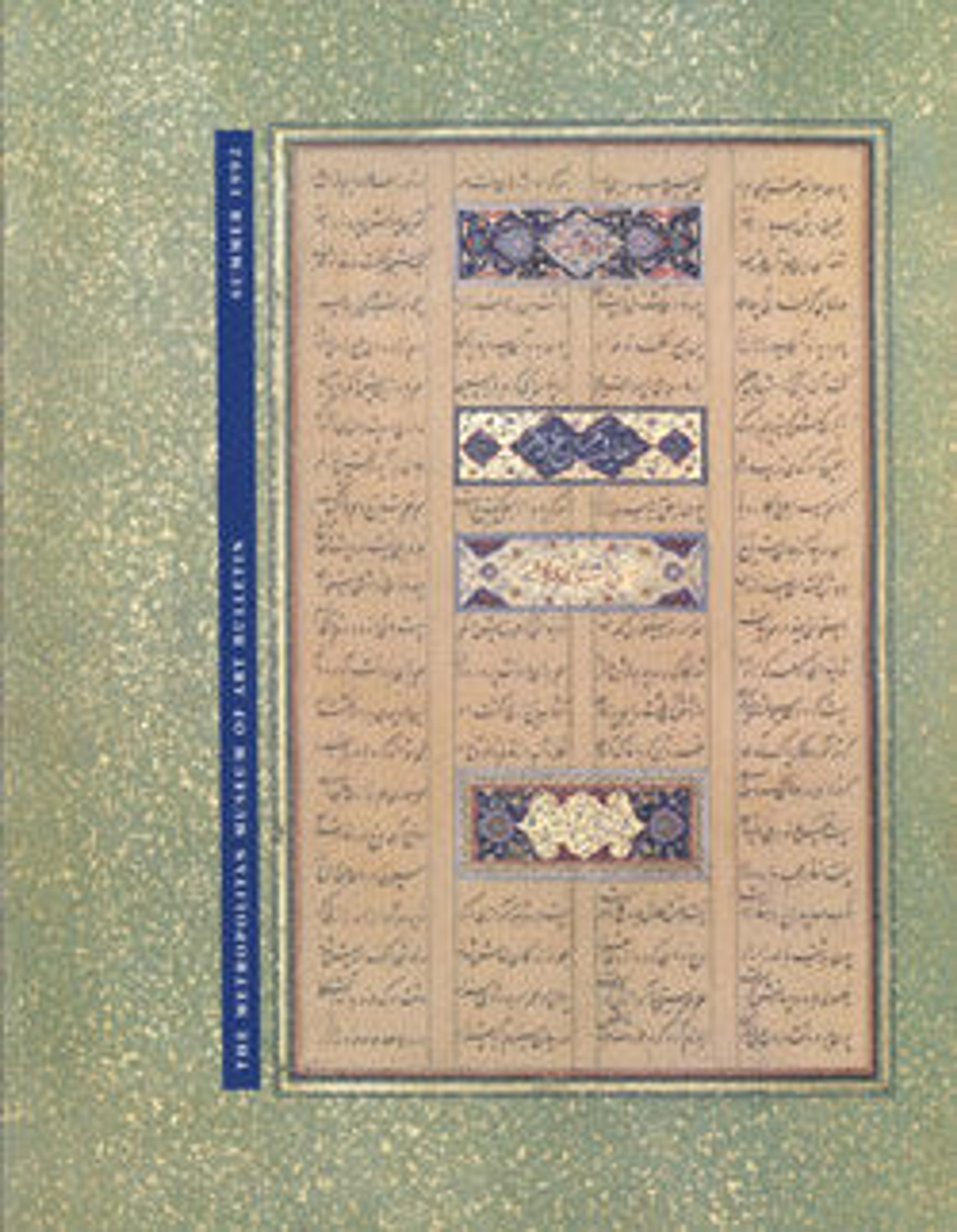Pen Box (Qalamdan) with Inscriptions
This pen box is decorated with bold thuluth calligraphic inscriptions and interlaced floral arabesques. The particular floral ornament, as well as the epigraphic style, is typical of Iranian metalwork dating to the late 15th and early 16th century.
The inscriptions contain prayers to Ali, the son-in-law and cousin of the Prophet Muhammad, as well as blessings to the owner, and the name of the engraver (Hasan Ramadan Shahi).
The interior of the box is divided into compartments to hold reed pen(s), the inkwell, and a sandpot. The high esteem of the calligrapher and his art is demonstrated by the lavish nature of this carefully crafted object, which would have both safeguarded and displayed his tools.
The inscriptions contain prayers to Ali, the son-in-law and cousin of the Prophet Muhammad, as well as blessings to the owner, and the name of the engraver (Hasan Ramadan Shahi).
The interior of the box is divided into compartments to hold reed pen(s), the inkwell, and a sandpot. The high esteem of the calligrapher and his art is demonstrated by the lavish nature of this carefully crafted object, which would have both safeguarded and displayed his tools.
Artwork Details
- Title:Pen Box (Qalamdan) with Inscriptions
- Calligrapher:Hasan Ramadan Shahi
- Date:early 16th century
- Geography:Attributed to Iran
- Medium:Brass; chased, engraved, and inlaid with silver
- Dimensions:Box: L. 13 1/2 in. (34.3 cm)
H. 3 1/4 in. (8.3 cm)
D. 4 in. (10.2 cm)
Spoon: L. 4 1/2in. (11.4cm)
H. 3/8 in. (1 cm)
D. 9/16 in (1.4 cm)
Wt. 0.14 oz. (4 g) - Classification:Metal
- Credit Line:Fletcher Fund, 1975
- Object Number:1975.350.1a–c
- Curatorial Department: Islamic Art
More Artwork
Research Resources
The Met provides unparalleled resources for research and welcomes an international community of students and scholars. The Met's Open Access API is where creators and researchers can connect to the The Met collection. Open Access data and public domain images are available for unrestricted commercial and noncommercial use without permission or fee.
To request images under copyright and other restrictions, please use this Image Request form.
Feedback
We continue to research and examine historical and cultural context for objects in The Met collection. If you have comments or questions about this object record, please contact us using the form below. The Museum looks forward to receiving your comments.
